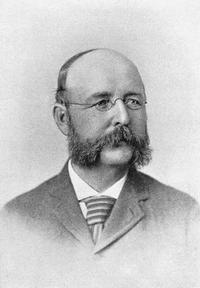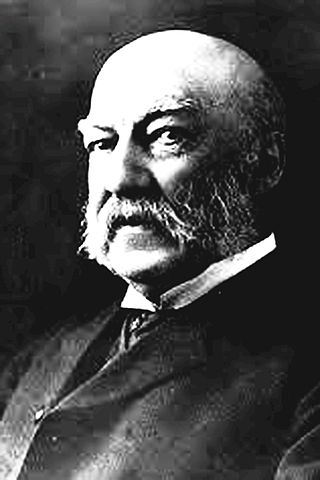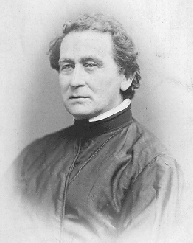Charles Nolcini (1802-1844) was an Italian-born American organist and composer.
Charles Nolcini was born in Moscow, Russia, to Italian parents in 1802.
On February 20, 1820, he arrived in Boston to pursue a career as a musician and composer. In Boston, Italian composers had already left their mark. Philip Trajetta, before moving to New York, had opened there the first American Conservatory of Music in 1801. Since 1815 conductor Louis Ostinelli had worked there with the Handel and Haydn Society; Nolcini had with him a relationship of close friendship throughout his life.
In the summer of 1822 Nolcini moved to Portland (Maine), where he worked not only as a music teacher but also as a teacher of French, having among his pupils the young Henry Wadsworth Longfellow. On October 29 of the same year Louis Ostinelli visited Portland for a concert with his wife, pianist Sofia Hewitt, and Nolcini as soloists. [1]
Nolcini served as organist of the Beethoven Society (1824–26) and the Second Parish Church (1826–28) in Portland (Maine), and then the King's Chapel in Boston (1828–32), the Unitarian Church in Bangor, Maine (1832–34) and the First Unitarian Church in Newburyport. [2] In addition to his activity as a musician and performer, Nolcini was also known as a composer of waltzes, marches and hymns.
After becoming an American citizen in 1842, Nolcini died prematurely two years later in Boston in 1844 .
Waltzers:
Hymns:
Marches:
Other compositions:
The Cemetery of Montmartre is a cemetery in the 18th arrondissement of Paris, France, that dates to the early 19th century. Officially known as the Cimetière du Nord, it is the third largest necropolis in Paris, after the Père Lachaise Cemetery and the Montparnasse Cemetery.
This is a list of notable events in music that took place in the year 1908.

This article is about music-related events in 1871.

Charles Bulfinch was an early American architect, and has been regarded by many as the first American-born professional architect to practice.

Jared Sparks was an American historian, educator, and Unitarian minister. He served as President of Harvard College from 1849 to 1853.

Sylvester Judd was a Unitarian minister and an American novelist.

John Knowles Paine was the first American-born composer to achieve fame for large-scale orchestral music. The senior member of a group of composers collectively known as the Boston Six, Paine was one of those responsible for the first significant body of concert music by composers from the United States. The Boston Six's other five members were Amy Beach, Arthur Foote, Edward MacDowell, George Chadwick, and Horatio Parker.

Amasa Hewins was an American portrait, genre and landscape painter. He also exported fine paintings, antiques, and objet d'art from Italy to Boston during the 1850s, selling most of it through private dealers and at auctions in New York City and Boston.
Henry Wellington Greatorex was an English-American musician.

John Zundel was an organist, composer, arranger, and pedagogue. Zundel was perhaps best known for his hymn BEECHER, widely used in American hymnals with "Love Divine" by Charles Wesley.
Oliver Shaw, was one of the first American composers.
Hans Gram (1754-1804) was a Danish composer and musician who emigrated to the United States in the early 1780s. In Boston, Massachusetts, he served as organist of the Brattle Street Church, and as a music teacher. He lived in Charlestown; and in Boston on Belknap's Lane and Common Street. His music "was performed at the funeral of John Hancock." He died in Boston in 1804. In 1810 a "Hans Gram Musical Society" formed in Fryeburg, Maine.
George Warne was a blind organist and composer born in Norfolk. He was noted as holding a number of organists posts despite being blind.

Richard Bond (1798–1861) was an early American architect who practiced primarily in Boston, Massachusetts.
Benjamin Franklin Baker was an American educator and composer.
Sophia Hewitt Ostinelli (1799-1845) was an American classical musician who was a child prodigy who later became the only woman ever employed as an organist and accompanist by the Handel and Haydn Society in Boston, Massachusetts. She also became the second musician ever to perform the music of Beethoven in Boston.

Anthony Francis Ciampi was an Italian priest of the Catholic Church and member of the Society of Jesus.